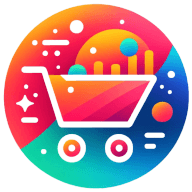Welcome to our deep dive into the world of consumer behavior analysis techniques. In this comprehensive guide, we'll explore the methods used by businesses to understand their customers better. These techniques are crucial for any company looking to improve its products, services, and overall customer experience. We'll delve into the various methods, their applications, and how they can benefit your business.
Understanding Consumer Behavior
Consumer behavior refers to the study of how individuals make decisions to spend their available resources on consumption-related items. It includes what they buy, why they buy it, when they buy it, where they buy it, how often they buy it, and how often they use it.
Understanding consumer behavior is crucial for businesses. It helps them to create and maintain a competitive advantage. It also allows them to meet their customers' needs more effectively, leading to higher customer satisfaction and loyalty.
There are several techniques for analyzing consumer behavior. These include observational techniques, ethnographic studies, surveys and questionnaires, in-depth interviews, focus groups, and experimental techniques. Each of these methods has its strengths and weaknesses, and the choice of technique will depend on the specific needs and resources of the business.
Observational Techniques
Observational techniques involve watching consumers in a natural or controlled setting. The observer does not interact with the consumers but merely records their behavior. This method can provide valuable insights into how consumers behave in real-world situations.
However, observational techniques also have their limitations. They can be time-consuming and expensive, and they may not provide insights into the reasons behind the observed behavior. Despite these challenges, when used correctly, observational techniques can be a powerful tool for understanding consumer behavior.
Ethnographic Studies
Ethnographic studies involve observing consumers in their natural environment. This method can provide a deeper understanding of consumer behavior, as it takes into account the cultural, social, and physical context in which consumption takes place.
Ethnographic studies can be particularly useful for understanding complex behaviors that are heavily influenced by cultural and social factors. However, like observational techniques, they can also be time-consuming and expensive.
Surveys and Questionnaires
Surveys and questionnaires are among the most common techniques for analyzing consumer behavior. They can be used to collect a large amount of data quickly and relatively inexpensively. They can also be used to gather information on a wide range of topics, making them a versatile tool for consumer behavior analysis.
However, surveys and questionnaires also have their limitations. They rely on self-reported data, which can be subject to bias. They also require careful design to ensure that the questions are clear and unambiguous.
In-Depth Interviews and Focus Groups
In-depth interviews and focus groups involve direct interaction with consumers. They can provide detailed insights into consumers' attitudes, motivations, and behaviors. They can also be used to explore new ideas and concepts.
However, like other qualitative techniques, in-depth interviews and focus groups can be time-consuming and expensive. They also require skilled moderators to ensure that the discussion stays on track and that all participants have an opportunity to express their views.
Experimental Techniques
Experimental techniques involve manipulating one or more variables and observing the effect on consumer behavior. They can be used to test hypotheses and establish causal relationships.
Experimental techniques can provide robust and reliable data. However, they also require careful design and control to ensure that the results are valid. They can also be expensive and time-consuming, particularly if the experiment involves a large number of participants or complex manipulations.
Wrapping Up: The Power of Consumer Behavior Analysis Techniques
Understanding consumer behavior is crucial for any business. It can help to improve products and services, enhance customer satisfaction, and maintain a competitive advantage. There are many techniques for analyzing consumer behavior, each with its strengths and weaknesses. The choice of technique will depend on the specific needs and resources of the business. By using these techniques effectively, businesses can gain valuable insights into their customers and make more informed decisions.

